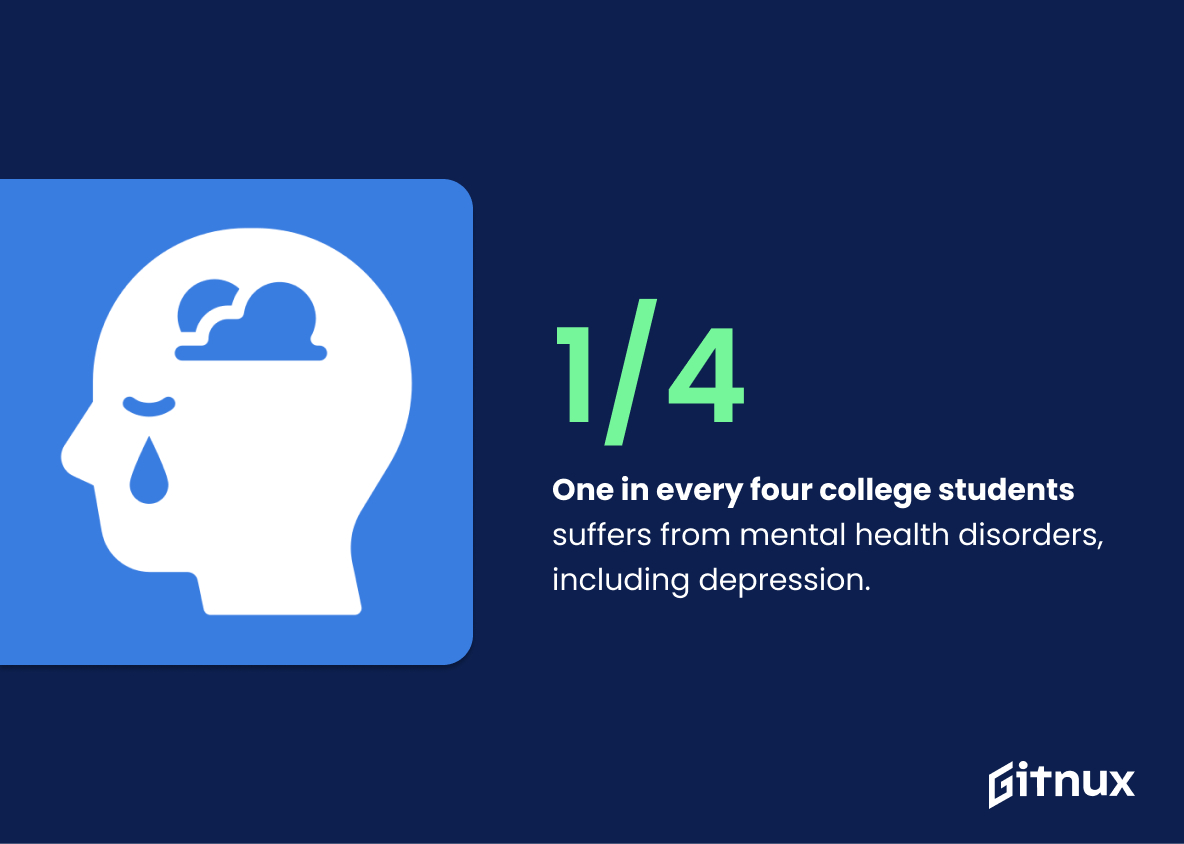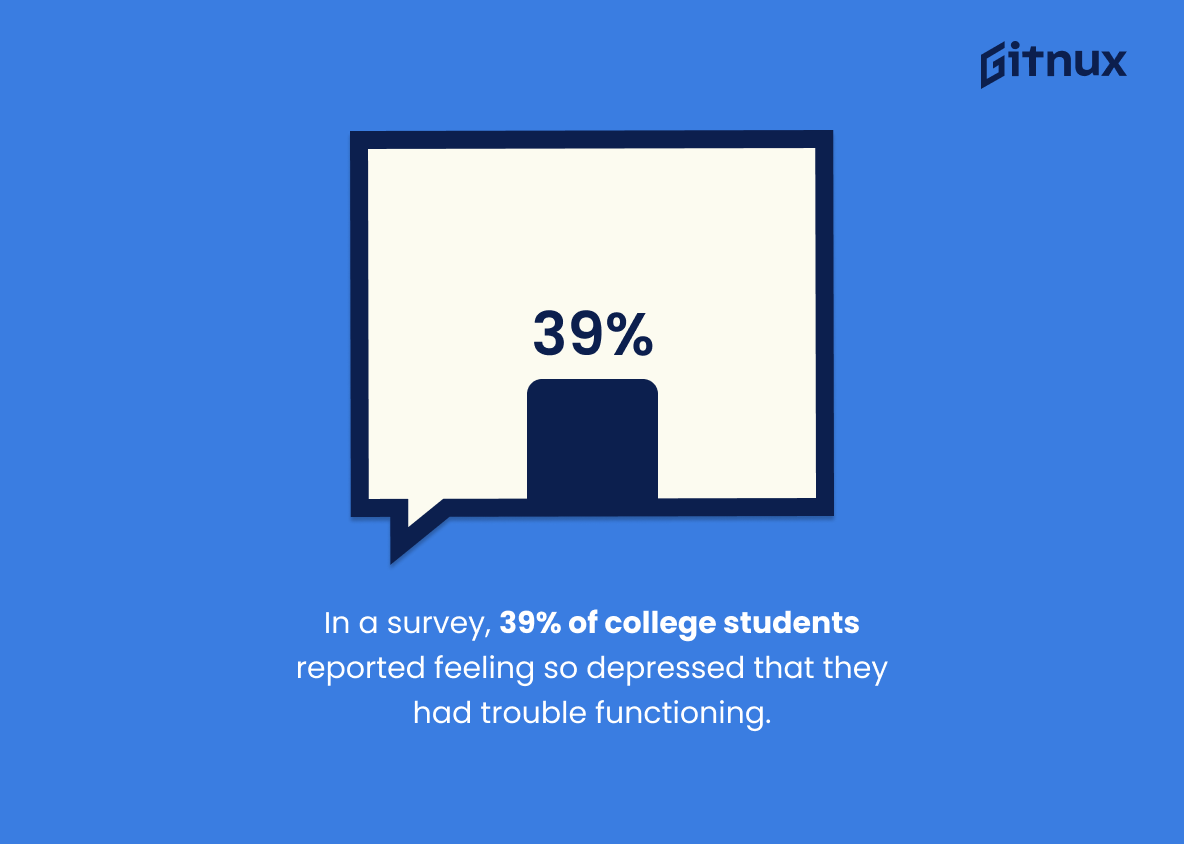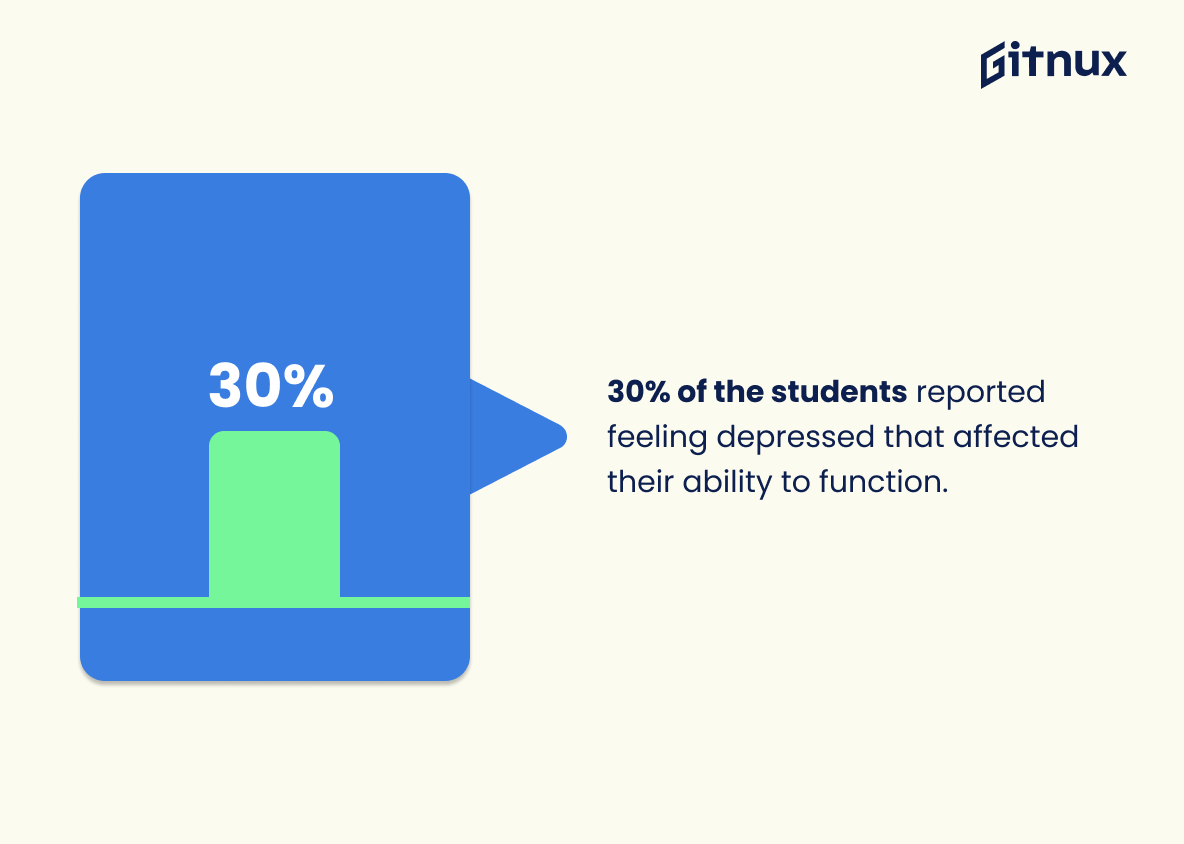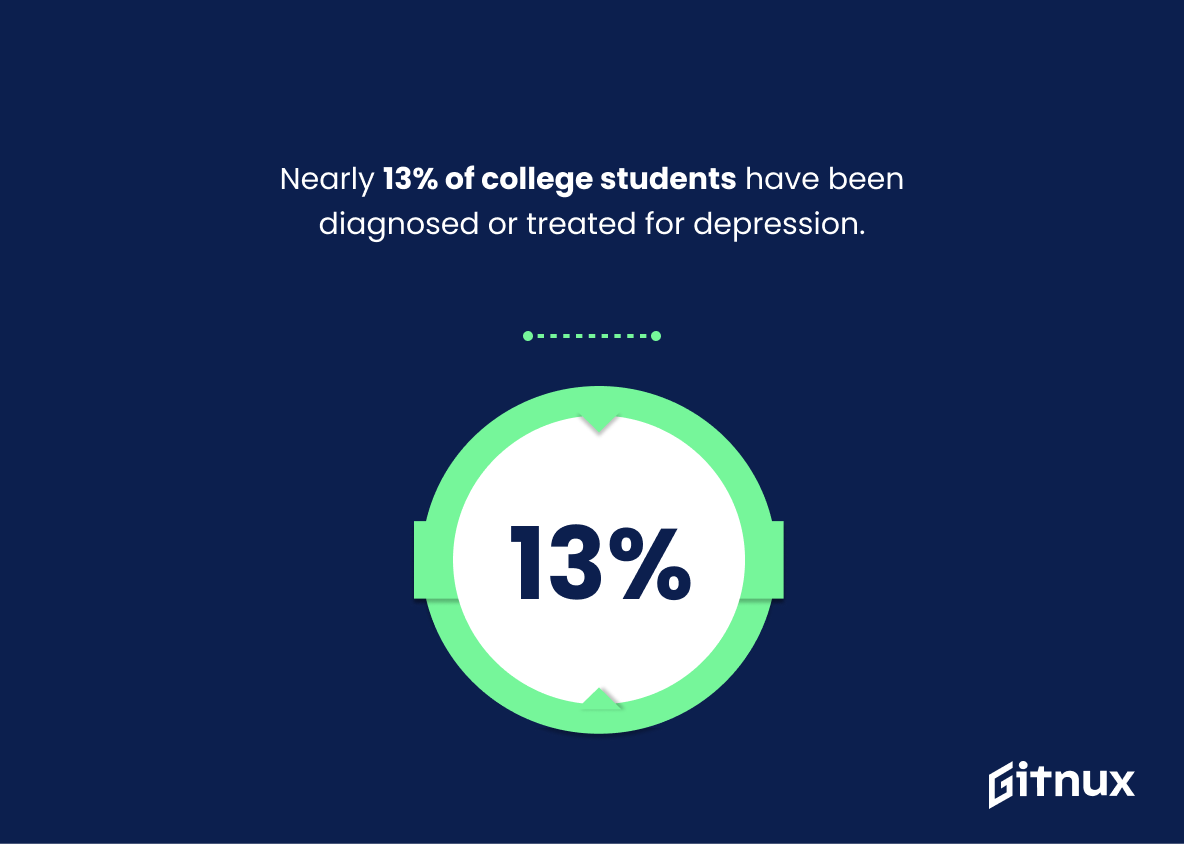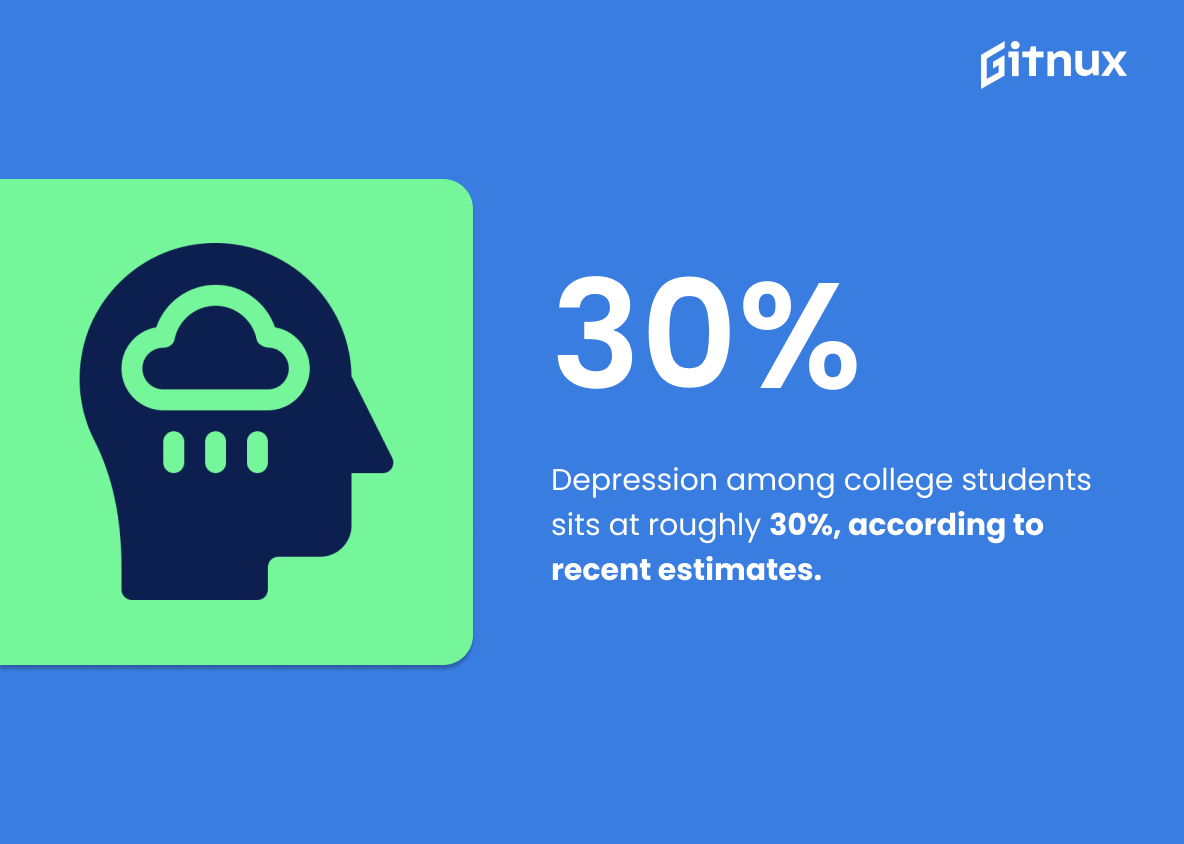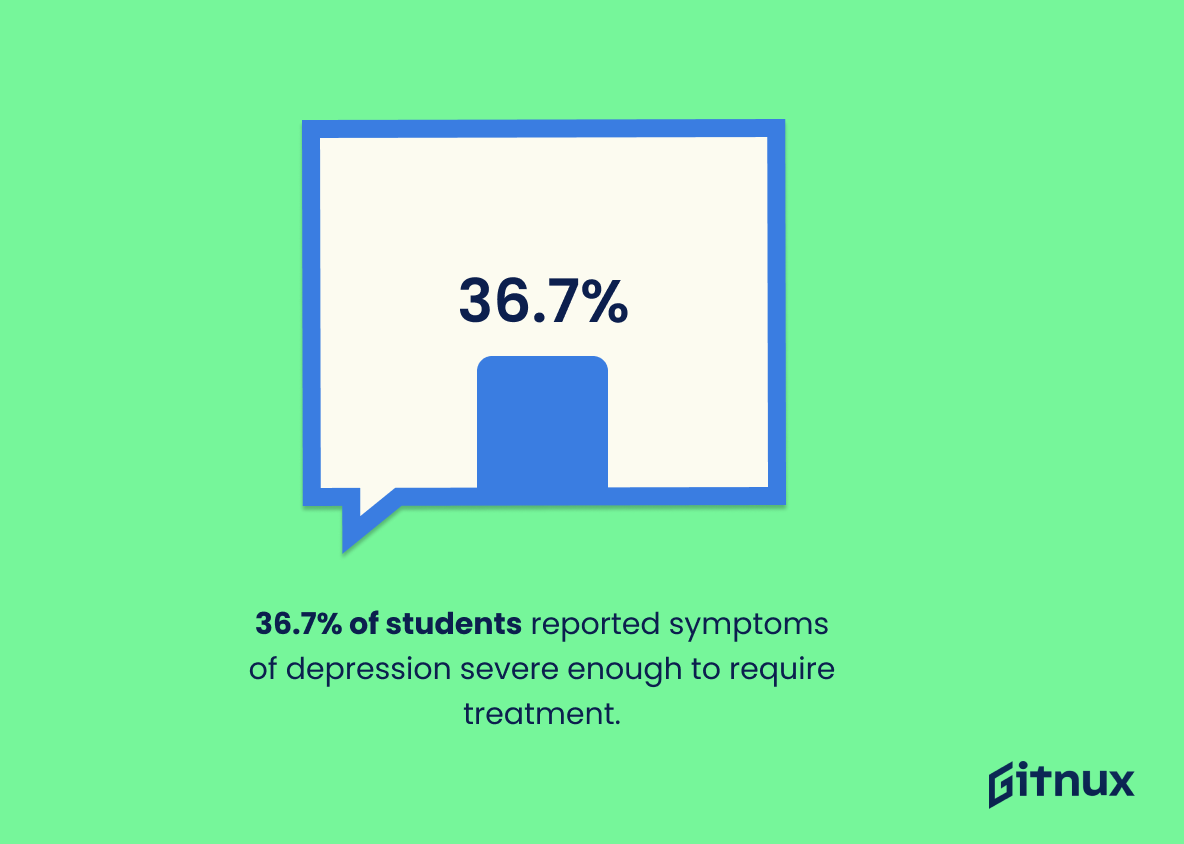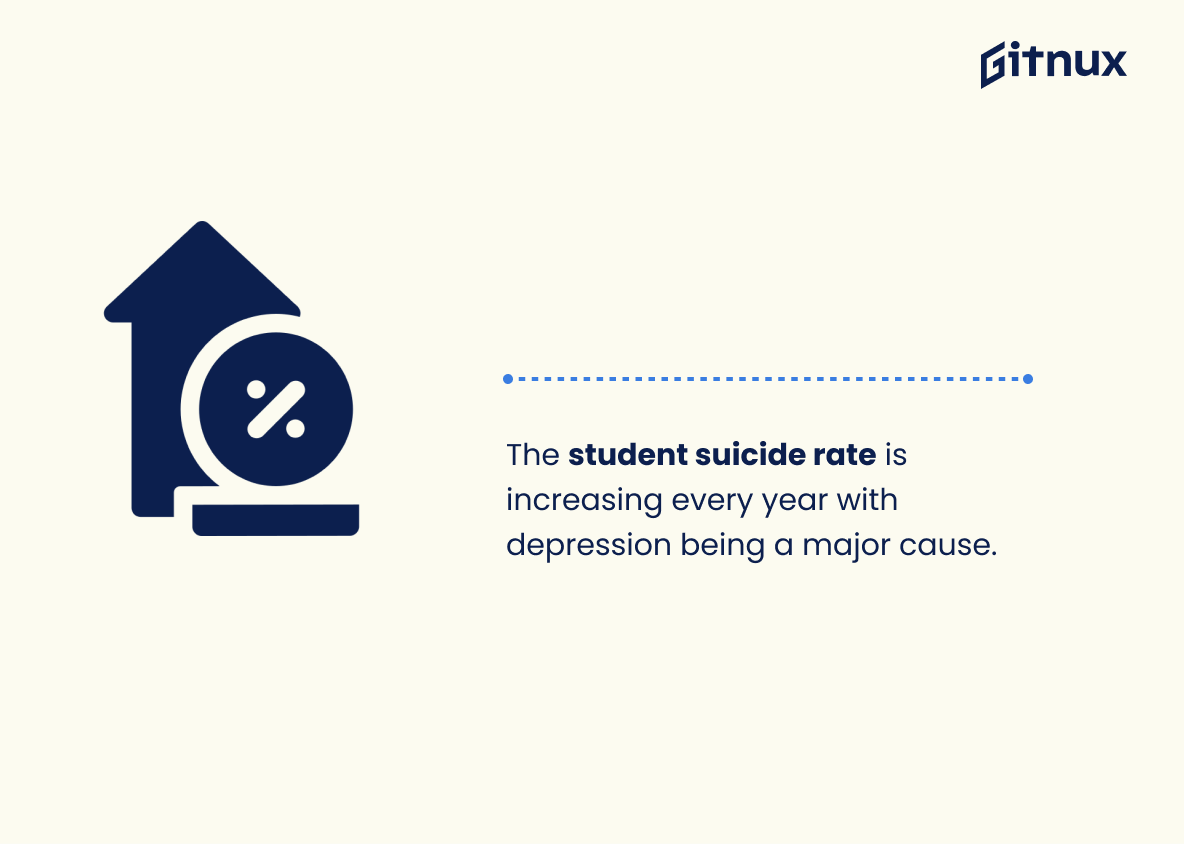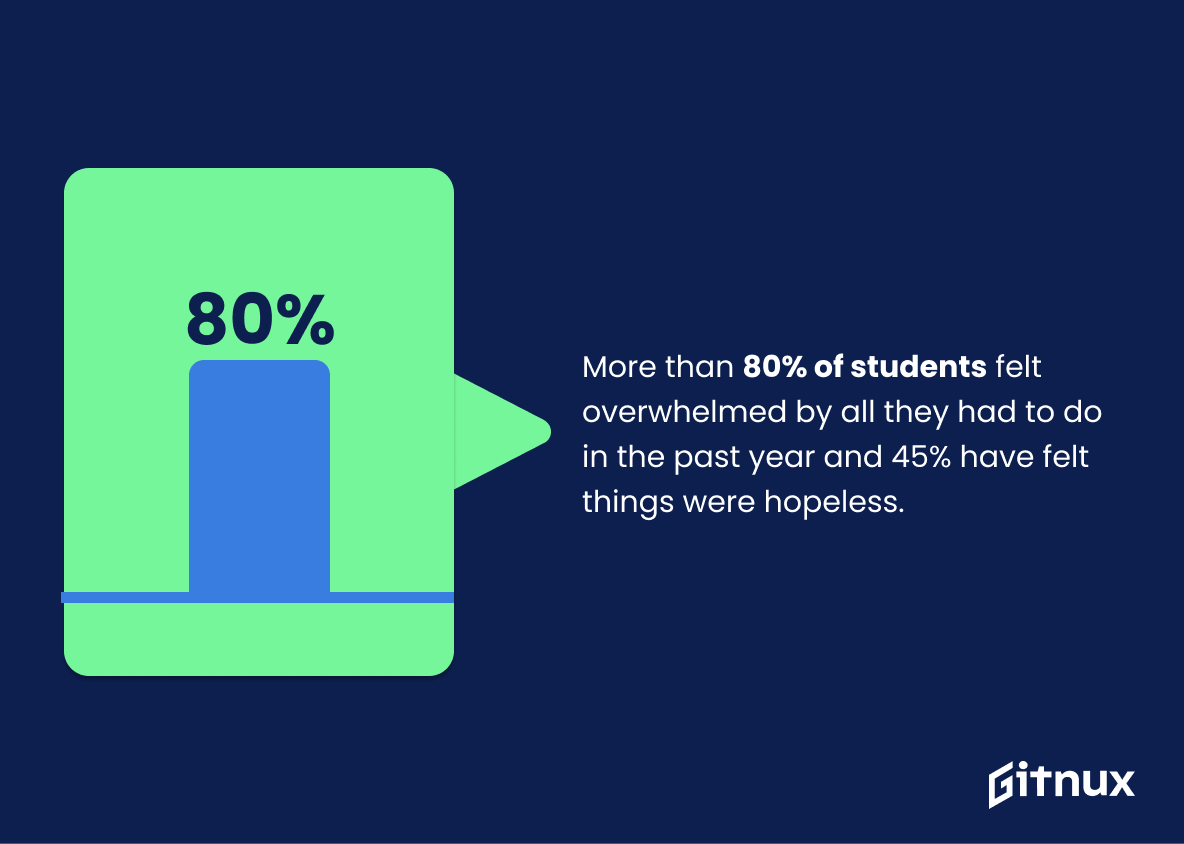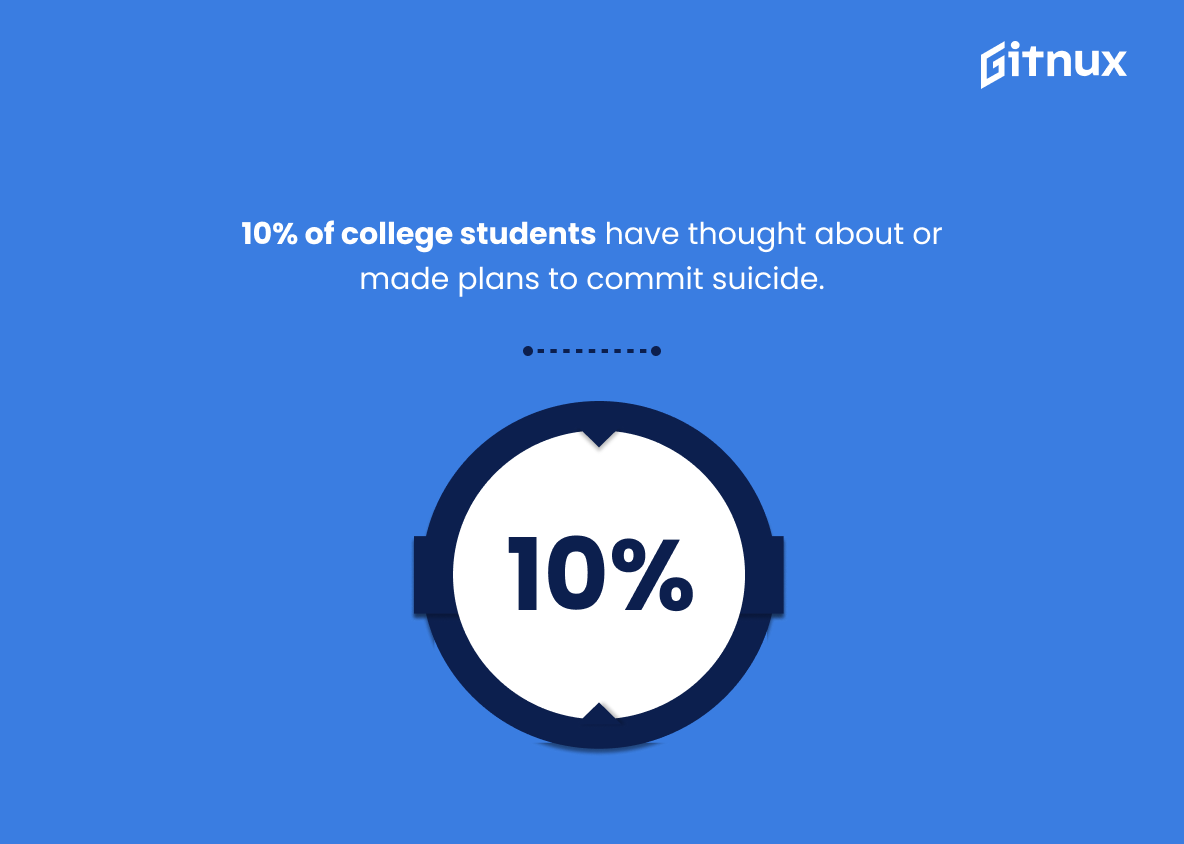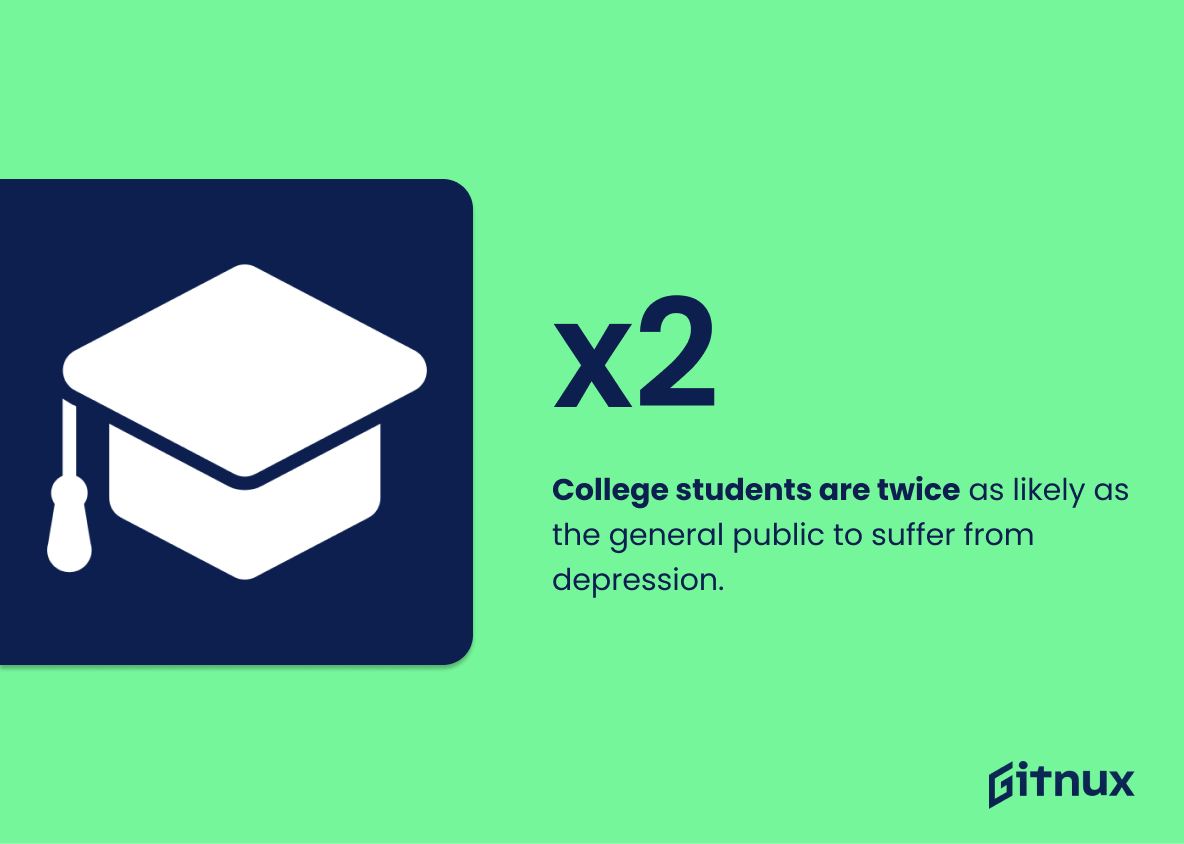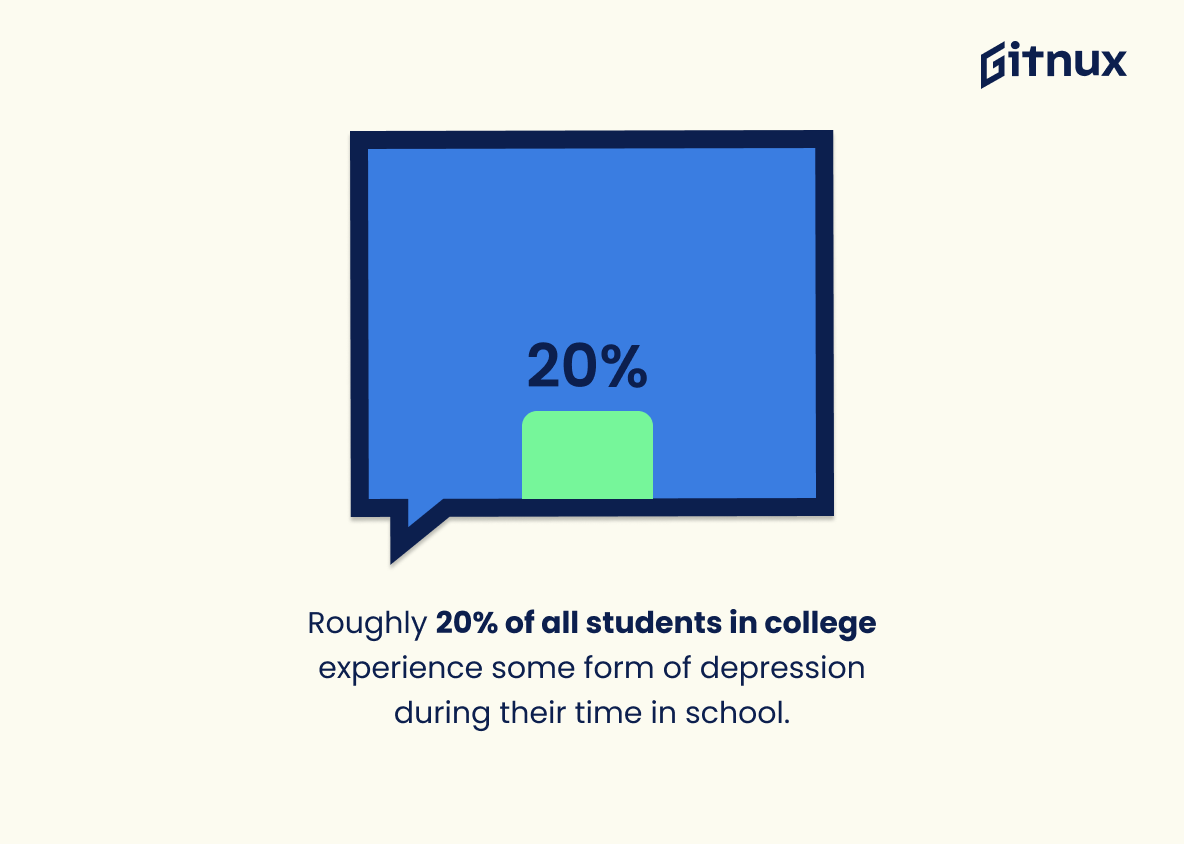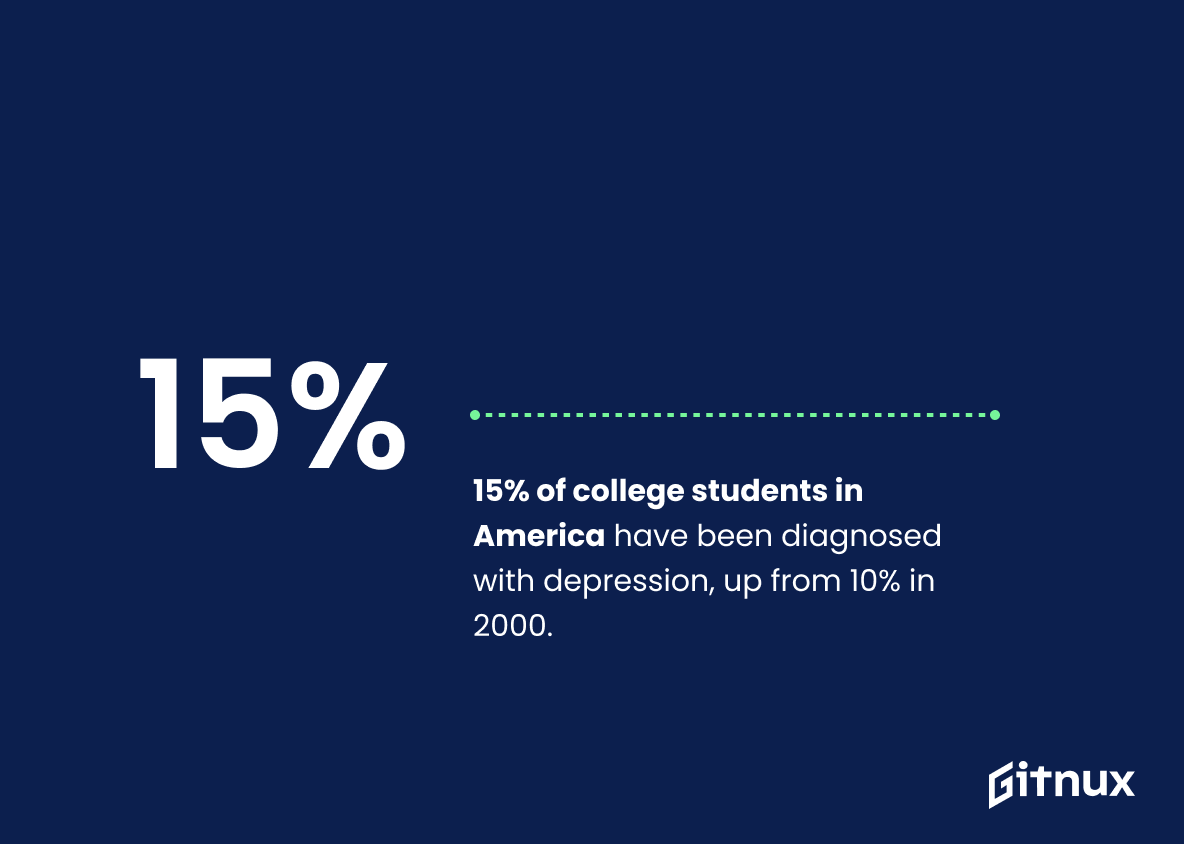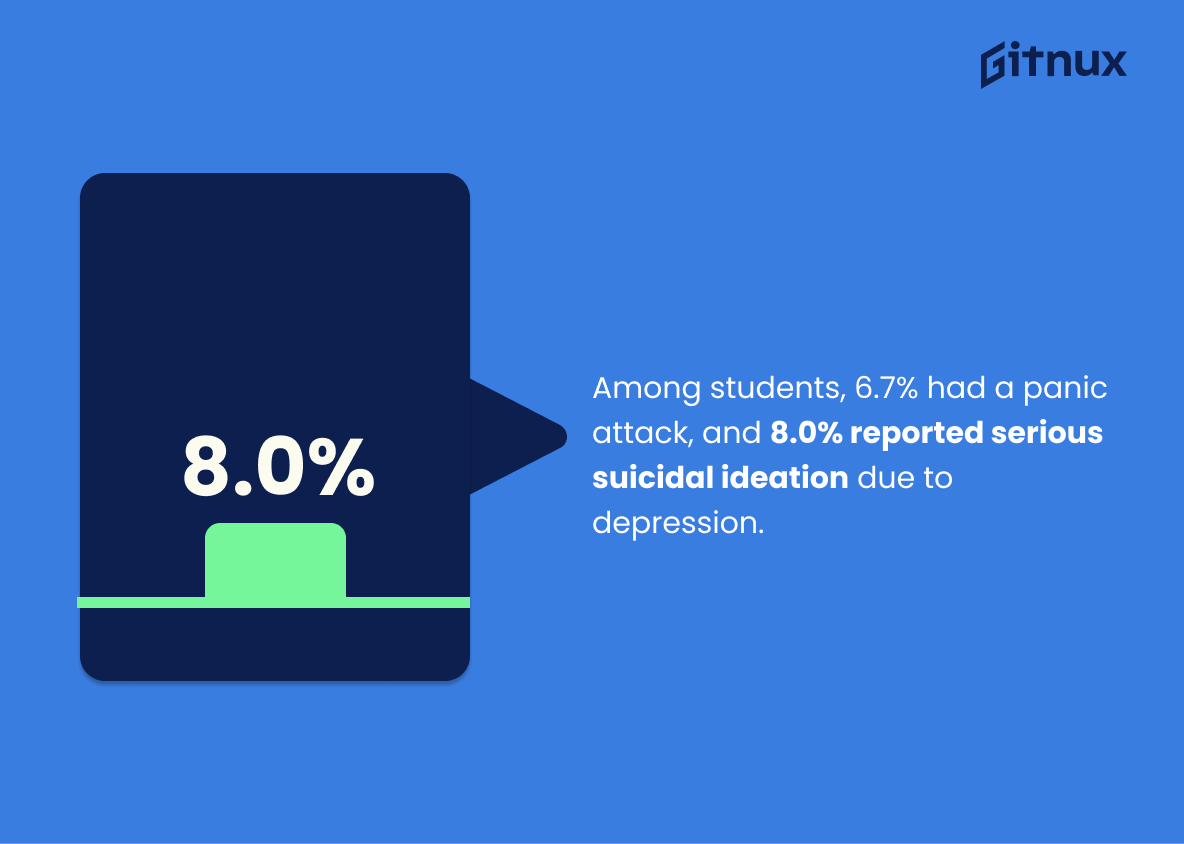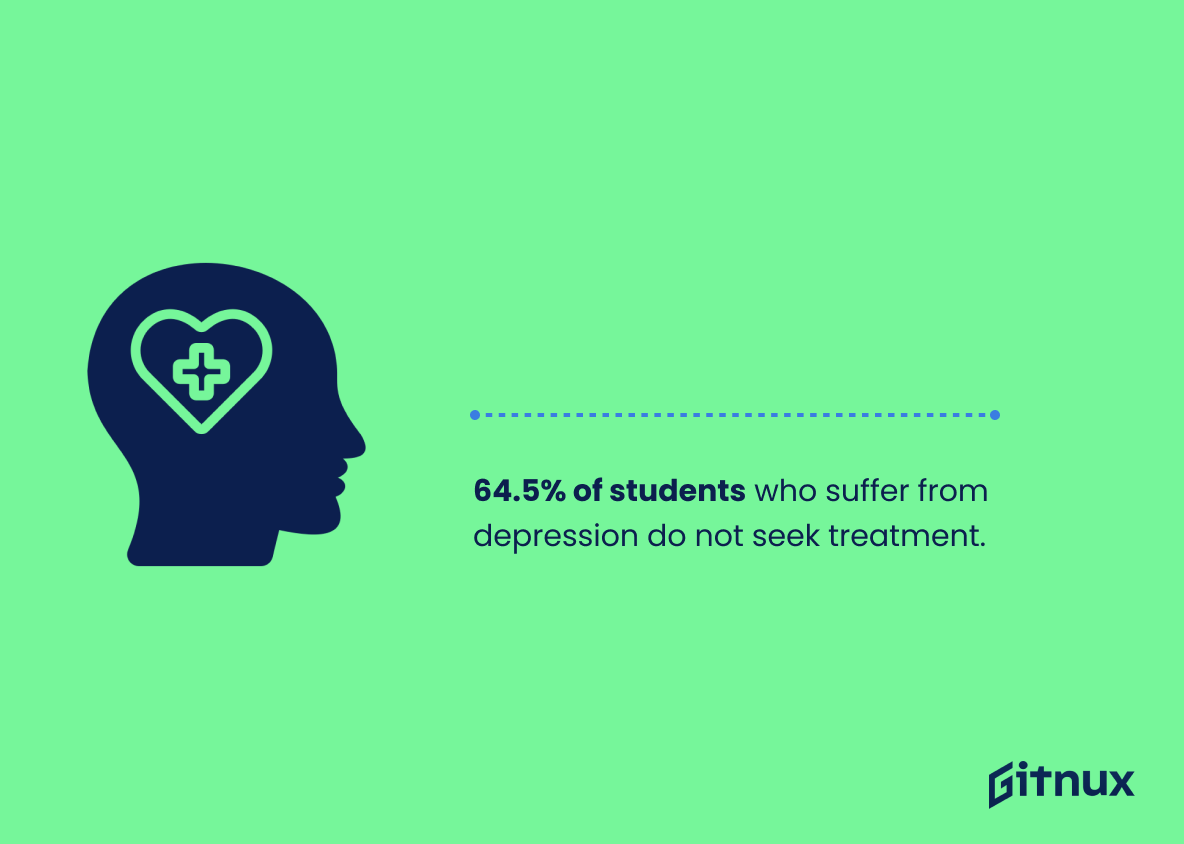Depression amongst students has surged to alarming levels in recent years, gradually turning into an epidemic that cannot and should not be ignored. Today, we delve deeper into this pressing issue, revealing some startling student depression statistics that will undoubtedly shed light on the reality of this rapidly escalating mental health crisis. This blog post aims to not only inform and educate people about its prevalence but also underline the urgent need for actionable solutions. Let’s navigate through these numbers together, sparking constructive discussions on tackling student depression and advocating for the profound importance of mental health in educational settings.
The Latest Student Depression Statistics Unveiled
One in every four college students suffers from mental health disorders, including depression.
Highlighting the fact that one in every four college students grapples with mental health disorders, notably depression, paints a stark reality of the magnitude of the problem among youth. It’s akin to pointing out that within any lecture class of around 20 students, about five are likely wrestling with an invisible, inner turmoil. Such a prominence raises alarms about the necessity of immediate and robust mental health interventions in colleges nationwide. Beyond the mere numbers, it promotes an understanding that depression among students isn’t an isolated occurrence but a broad-spectrum issue demanding collective recognition and action. Such profound insights call for a reinvention of the educational environment to be more sensitive and accommodating to student mental health needs. As such, our understanding of student depression is not merely highlighted, but propelled further into the limelight, igniting much needed dialogue and action.
In a survey, 39% of college students reported feeling so depressed that they had trouble functioning.
The statistic – 39% of college students reporting such deep-seated depression that they struggle to function – paints a vivid picture of the magnitude of mental health challenges confronting our academic institutions today. These striking figures are a potent alarm bell, echoing throughout the corridors of our universities and colleges, nudging us to pay more than just a cursory attention to student depression. The statistic ultimately serves as a powerful catalyst for conversation in any blog post about Student Depression Statistics—it underscores the urgency to reinforce support systems and implement effective solutions to improve students’ mental health.
64.5% of students who suffer from depression do not seek treatment.
Highlighting the distressing fact that 64.5% of students grappling with depression do not seek treatment paints a stark picture of the uphill crisis in mental health among the student population. It unquestionably underscores the silent battle waged by many young minds, emphasizing the urgent need to address stigma and accessibility surrounding mental health services. In the realm of student depression statistics, this figure functions as a loud cry for increased understanding, awareness, destigmatization and easy availability of mental health services. This way, we can ensure that no student is left to silently cope with depression alone, and instead, has the resources to seek and receive the help they need.
30% of the students reported feeling depressed that affected their ability to function.
Unearthing the chilling truth that nearly one third of students are grappling with depression affecting their normal functioning, serves as a significant beacon shedding light on the pervasive malady of mental health distress among young people. These figures command immediate attention, revealing the deep-rooted crisis lurks within the hallways of modern-day academia. With this data, we are called upon to reevaluate our education system, mental health supports, and societal pressures that may be contributing to this staggering number. It’s not just a number, it’s a wake-up call – a jarring reminder of unseen battles that mandates our attention and action.
Nearly 13% of college students have been diagnosed or treated for depression.
Diving into the ocean of the statistic ‘Nearly 13% of college students have been diagnosed or treated for depression’, we find intense waves of relevance for a blog post about student depression statistics. This information paints an alarming picture, forging a colossal iceberg that cannot be left unnoticed. Not only does it elucidate the magnitude of mental health struggles experienced by college students – a significant portion of our future leaders, professionals, and thinkers – but it also underscores the necessity for urgent mental health interventions, supports, and services on campuses nationwide. This percentage is not just an emotionless statistic but a rallying cry for more awareness, increased understanding, and focused action to help address depression among our scholars. In essence, this number humanizes the often neglected story of student depression, transforming it into a narrative that demands attention.
Depression among college students sits at roughly 30%, according to recent estimates.
Unraveling the tapestry of Student Depression Statistics unveils a chilling thread – a striking 30% prevalence of depression among college students as per recent estimates. This linchpin data point underscores the significant magnitude of this mental health crisis in our institutions of higher learning. It waves a red flag, highlighting an urgent call to action for mental health advocacy, comprehensive interventions, and institutional policies to arrest this disturbing trend. Serving as a critical wake-up call, this statistic emphasizes the gravity and urgency to provide resources for mental health support prominently on college campuses. Beyond cold numbers, it humanizes the face of depression, giving voice to the silent suffering of almost one in three college students.
36.7% of students reported symptoms of depression severe enough to require treatment.
Unveiling an alarming facet of student life, the figure ‘36.7% students reporting severe depression symptoms warranting treatment’, serves as a startling reminder of the mental health crisis lurking in academic corridors. In a discourse on Student Depression Statistics, this data becomes a significant cornerstone, underpinning the gravity and prevalence of the issue at hand. It not only headlines the urgent need for comprehensive mental health strategies and support mechanisms within scholastic environments, but also urges on proactive awareness programs to de-stigmatize mental health discussions. This statistic acts as a call to arms – alerting educators, parents, and policy makers to the silent distress echoing amongst nearly one third of the student population. For the students themselves, it’s a beacon of solidarity, whispering, ‘You’re not alone’, while pushing the conversation of depression from the fringes into mainstream discourse.
The student suicide rate is increasing every year with depression being a major cause.
Delving into the alarming echo of ‘The student suicide rate is increasing every year with depression being a major cause,’ illuminates a stark reality that necessitates robust discussion and action. Shrouded in the distressing cloak of depression, students are suffering at a constantly escalating pace, as depicted by the rising suicide rates. This significant statistic feeds directly into the heart of our discourse on student depression statistics, offering crucial insights into a somber consequence of unattended mental health issues. It amplifies the urgent need for effective mental health strategies, preventive measures and supportive resources in an educational setting, ultimately striving to rewrite this grim narrative.
More than 80% of students felt overwhelmed by all they had to do in the past year and 45% have felt things were hopeless.
Depicting a stark reality, the aforementioned statistic paints a vivid picture of the mounting pressures faced by students today. An overwhelming 80% battled the strain of excess responsibilities, manifesting the potential breeding ground for mental health issues such as stress, anxiety, and depression. Moreover, the chilling fact that nearly half of these students perceived their situation as hopeless elevates the urgency of the situation.
This serves as a thunderous wake-up call for educators, parents, and policymakers alike, highlighting the critical need for fortified mental health support within our educational institutions. The figures do not merely quantify the problem, they amplify the silent cries for help echoing through our classrooms and dorm rooms. The article’s emphasis on these numbers cements the severity of student depression, opening up space for proactive dialogue and preventive action.
10% of college students have thought about or made plans to commit suicide.
Peeling back the layers of student depression statistics reveals a harrowing fact; an unsettling 10% of college students have pondered or constructed plans to commit suicide. This metric not only acts as a distress signal indicating the gravity of mental health issues among the youth, but also compels us to delve deeper into the underlying causes and effects. Further, it’s an urgent call to academia and society alike, urging to fortify mental support systems, and generate awareness – because every student’s life is invaluable. We cannot afford to overlook or underestimate this hefty percentage, given its dire repercussions. In every hundred students, ten are silently screaming for help, making this statistics a clarion call for immediate action.
College students are twice as likely as the general public to suffer from depression.
As we unravel the fabric of student depression statistics in our blog post, one glaring pattern stands out, casting a formidable shadow—college students grapple with depression at a rate two times higher than the regular populace. This number is no mere figure; it’s a harsh reality echoing through lecture theatres, dormitories, and personal study rooms. It tells the quiet but potent story of the immense psychological burden that academia can place on students. It underlines the pressing need to foster a supportive, understanding environment in our educational institutions and to make mental health resources more accessible for the younger generation. Most importantly, it acts as a rallying call, urging us to rethink and remodel how we address psychological health in higher education settings. This twofold incidence of depression among students isn’t just a statistic. It’s a cry for change that we can’t afford to ignore.
Roughly 20% of all students in college experience some form of depression during their time in school.
The significance of the haunting statistic – ‘Roughly 20% of all students in college experience some form of depression during their time in school’ – is like a shadow that looms large over the landscape of student life. It alarmingly underlines the fact that college, while seen as a time of growth and liberation, can paradoxically be a period of intense emotional turmoil for a substantial fraction of students. In the discourse on Student Depression Statistics, this nugget of truth serves as a stark reminder that mental health issues are not fringe scenarios, but a pervasive reality for one in every five students. It heightens the urgency for pro-active mental well-being measures and compels us to envision a more supportive and empathetic academic environment.
15% of college students in America have been diagnosed with depression, up from 10% in 2000.
Delving into the heart of depression statistics among college students in America, we find an alarming trend – a jump from 10% in 2000 to 15% recently. When viewed through the lens of a blog post on Student Depression Statistics, this data paints a vivid picture of the escalating psychological struggles within the academic realm. This upward trajectory serves as a clarion call, echoing the urgent need for implementation of effective mental wellness policies and more robust support systems. Furthermore, it acts as a magnetic element, drawing reader’s attention to the seriousness of the issue while amplifying the relevancy and importance of the discussed topic. In conclusion, this statistic doesn’t just quantify reality; it unfurls a strikingly powerful narrative of the rising tide of emotional distress among American college students.
Among students, 6.7% had a panic attack, and 8.0% reported serious suicidal ideation due to depression.
This staggering data, revealing that 6.7% of students experienced panic attacks and 8.0% had serious suicidal ideation due to depression, underscores the acute gravity and widespread impact of mental health challenges within the student population. This calamitous fact suggests a pressing obligation for immediate investment in mental health initiatives, endeavored at addressing the complex spectrum of depression among students. The prominence of these figures cannot be overlooked in conducting a comprehensive discussion around Student Depression Statistics on a blog post. The inclusion of this data not only deepens readers’ understanding of the topic, but also propels actionable conversations around precaution, detection, and intervention strategies.
Conclusion
Student depression is a serious and pervasive issue in our education system today. Statistics clearly show the alarmingly high prevalence and the devastating impact it has on our youth’s academics, social life, and overall well-being. Understanding and acknowledging these statistics is the first step towards change. As a society, we can no longer downplay or ignore student depression. Instead, proactive engagement, comprehensive support structures, and innovative policy changes must be brought about to promote mental health awareness and provide much-needed assistance. Every student deserves an environment conducive to not only learning but thriving in all aspects of life, and it is our collective responsibility to ensure they get it.
References
0. – https://www.www.bbc.com
1. – https://www.www.healthline.com
2. – https://www.www.researchgate.net
3. – https://www.www.mentalhealth.org.uk
4. – https://www.www.bradley.edu
5. – https://www.www.psychologytoday.com
6. – https://www.www.report.nih.gov
7. – https://www.www.bcm.edu
8. – https://www.www.acha.org
9. – https://www.www.apa.org
10. – https://www.www.mentalhelp.net
11. – https://www.www.bestcolleges.com
12. – https://www.www.insidehighered.com
13. – https://www.www.collegedrinkingprevention.gov
